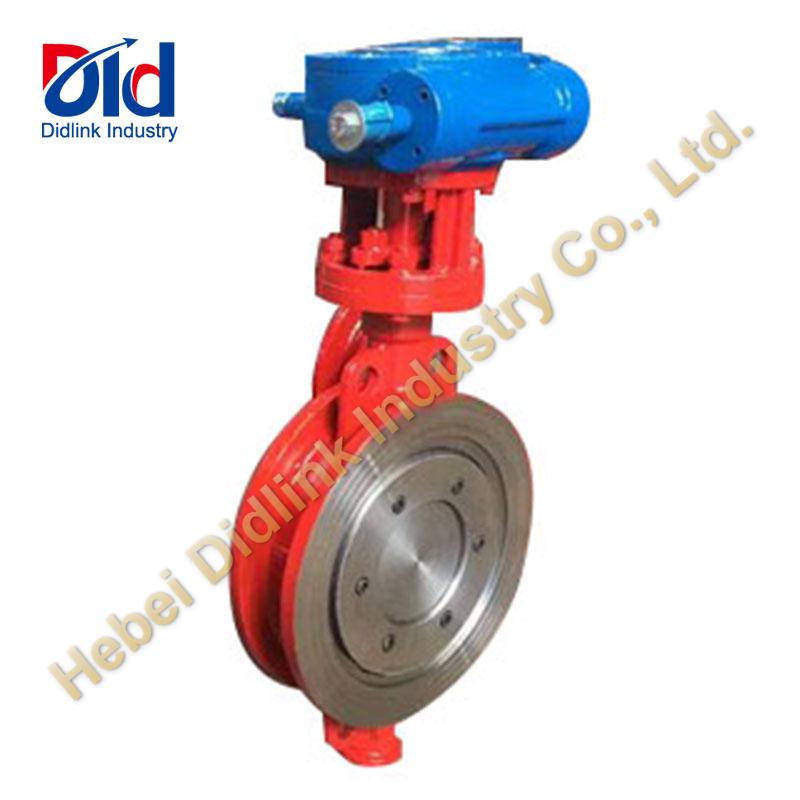Development of triple eccentric butterfly valve

1. Concentric butterfly valve
The structure feature of the butterfly valve is that the shaft center of the valve rod, the center of the butterfly plate and the center of the body are in the same position. The structure is simple and the manufacture is convenient. The common rubber lined butterfly valve belongs to this type. The disadvantage is that the butterfly plate and valve seat are always in the state of extrusion and scraping, with large resistance distance and fast wear. In order to overcome extrusion, scratch and ensure sealing performance, the valve seat is basically made of elastic materials such as rubber or polytetrafluoroethylene, but it is also limited by temperature in use. This is why people traditionally think that butterfly valves are not resistant to high temperature.
2. Single eccentric butterfly valve
In order to solve the problem of extrusion between butterfly plate and valve seat of concentric butterfly valve, a single eccentric butterfly valve is produced. Its structural feature is that the shaft center of valve rod deviates from the center of butterfly plate, so that the upper and lower ends of butterfly plate no longer become rotary axis, disperse and reduce the excessive extrusion between upper and lower ends of butterfly plate and valve seat. However, due to the single eccentric structure in the whole process of valve opening and closing, the scraping phenomenon between butterfly plate and valve seat has not disappeared, and the application range is similar to that of concentric butterfly valve, so it is not used much.
3. Double eccentric butterfly valve
On the basis of single eccentric butterfly valve, the most widely used double eccentric butterfly valve is further improved. The structure feature is that the shaft center of the valve rod deviates from the center of the butterfly plate and the center of the body. The effect of double eccentricity makes the butterfly plate break away from the valve seat immediately after the valve is opened, which greatly eliminates the unnecessary excessive extrusion and scratch between the butterfly plate and the valve seat, reduces the opening resistance, reduces the wear and improves the service life of the valve seat. The large reduction of scraping, at the same time, the double eccentric butterfly valve can also use metal seat, which improves the application of butterfly valve in the field of high temperature. However, because the sealing principle belongs to position sealing structure, that is, the sealing surface of butterfly plate and valve seat is in line contact, and the elastic deformation caused by squeezing the valve seat through butterfly plate produces sealing effect. Therefore, the requirements for closing position are very high (especially for metal valve seat), and the pressure bearing capacity is low. This is why people traditionally think that butterfly valve is not resistant to high pressure and has large leakage.
4. Triple eccentric butterfly valve
To withstand high temperature, hard seal must be used, but the leakage is large; to zero leakage, soft seal must be used, but not resistant to high temperature. In order to overcome the contradiction of double eccentric butterfly valve, the third eccentricity of butterfly valve was carried out. The structural features of the structure are that the conical axis of the butterfly plate sealing surface is inclined to the cylinder axis of the body while the shaft center of the double eccentric valve rod is eccentric. That is to say, after the third eccentricity, the sealing section of the butterfly plate is no longer true circle, but ellipse, and the shape of its sealing surface is asymmetric, one side is inclined to the body center line, and the other side is parallel to the body center line. The biggest feature of the third eccentricity is that it fundamentally changes the sealing structure, which is no longer a position seal, but a torque seal. That is, it does not rely on the elastic deformation of the valve seat, but completely relies on the contact surface pressure of the valve seat to achieve the sealing effect. Therefore, the problem of zero leakage of metal valve seat is solved at one stroke, and the contact surface pressure is proportional to the medium pressure, and it is resistant to high pressure and high temperature readily solved.

 JACKY
JACKY